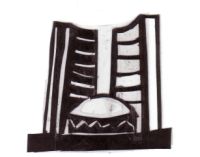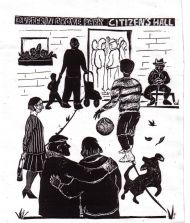
Centre For Local Research into Public Space (CELOS)
How parks and recreation got in the trouble it's in now
From October 2024 Dufferin Grove Park newsletter:
One Friday morning in late November 2003, just before a newly-elected mayor (David Miller) was to be sworn in after a municipal election, I got a call from the Dufferin Grove staff. A thick brown envelope with my name on it had been found on the café counter when the staff opened the building in the morning.
It must have been delivered by someone with a building key. There was no sender name on the envelope, and it was sealed. I came down to the park to see what was in it.
The envelope contained a document entitled Renewing our focus - Moving forward with Structural Change in Parks and Recreation. November 2003. Each individual page was stamped with the words DRAFT – do not reproduce. There was also a letter exhorting senior staff to embrace the changes and to see the abolition of their existing jobs as an exciting opportunity. There was no note inside, about who might have wanted outsiders, like me, to read this.

city hall
The plan said that there was to be one less director and 18 fewer area-managers and neighbourhood supervisors. The remaining staff were to be assigned to very large sections of the city, to float around according to a list of “functions” rather than being connected to any specific neighborhood. The main steps to dismantling the existing neighbourhood-based Parks and Recreation Division, and replacing it with a much more centralized structure, were to be taken on Tuesday and Wednesday of the following week.
I took the envelope home and spent the weekend talking to park friends about it. I had a few contacts among management staff, but none of them admitted to leaving the envelope for me. One of them said it could have been anybody. Apparently staff were very unhappy with the proposal, and CELOS was known to be a critic of City Hall.
So I wrote a CELOS analysis of the report. But for who? I had an idea. Mayor-elect David Miller had announced right after his election that he was setting up an advisory panel to help with the transition. The panel included two people whom I knew a little – former Toronto mayor David Crombie, and Jane Jacobs. I looked up David Crombie’s address in the phone book, and I already knew where Jane Jacobs lived. I put together two big envelopes with the CELOS report and a copy of the city’s draft, and wrote a note on the outside of the envelope. “I plan to give this report to the mayor on Monday. Please read it and let the mayor know if you agree that this plan should be suspended until the new council meets.” On Sunday night I drove to both their houses and stuck the envelopes in their mailboxes. I didn’t want to knock on their doors, but I crossed my fingers that they would find them in the morning.
On Monday morning I went to City Hall to drop off the mayor’s envelope. He was standing near the front doors, having his picture taken with a broom, the symbol of his campaign. He was surrounded by smiling people, so I gave the envelope to an assistant.
Later on I heard from an acquaintance at City Hall that, before the Monday afternoon meeting of the advisory panel, Jane Jacobs had followed David Miller down the hallway, waving the CELOS restructuring critique and urging him to read it. My source overheard Jacobs reading this part aloud to Miller: “This is a very bad blow for neighbourhoods. In our area, if this change goes through, our very active ‘park friends’ group will have to work with 21 different supervisors and 6 managers – we currently work with three supervisors and one manager. The relationships we slowly built up after the last big upheaval when the megacity was created, will disappear in one stroke. And the story will be the same for park friends and advisory councils all over the city.”
Jacobs told the mayor that the plan was the kind of approach she had been fighting against all her life. Other councillors said they were dubious too. So Mayor Miller ordered the plan to be suspended, until there could be more community and staff input.

two years of meetings
Most of the upper management staff were angry at this development. After months of meetings, their new plan had been ready to go, and now they were to be mired in more meetings. But they saw no choice but to roll up their sleeves and go to work. A large citywide stakeholder group was established. Then there were almost two years of public meetings, with many round tables and coloured markers and sticky notes for community ideas about how to restructure parks and recreation. After two years, many of the participants had tired of the subject and dropped out. Then a new report was released, with more or less the original plan the parks and rec management had developed in 2003. And the reshuffling went ahead.
The regrettable end result of that plan is now visible across the city in parks and community centres.



 Show search options
Show search options




 You are on the [Restructuring 2003] page of folder [Research Library ]
You are on the [Restructuring 2003] page of folder [Research Library ] For the cover page of this folder go to the
For the cover page of this folder go to the